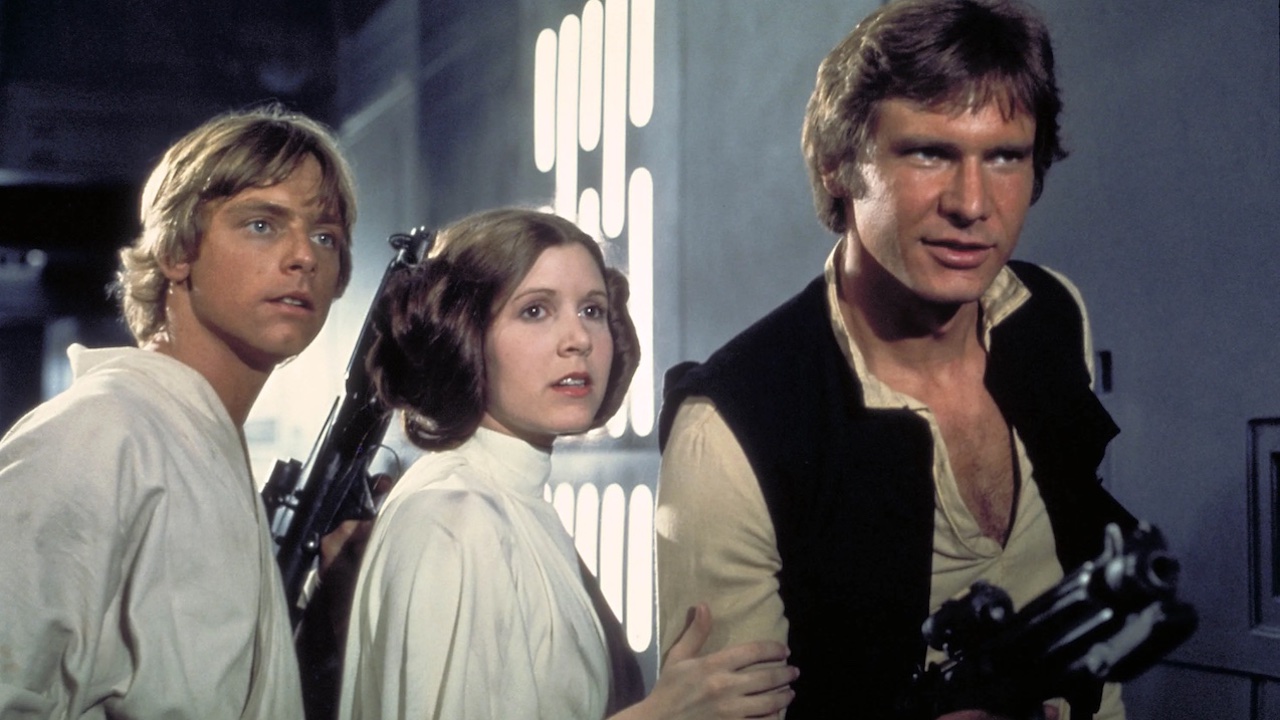How the Navajo Nation Uses a Unique ‘Star Wars’ Dub To Preserve Language

Language is all about connection—to the people around you, to your culture, and to your heritage. So when Star Wars Episode IV was dubbed in the 700-year-old language of the Navajo Nation, it connected them to a language that was slipping away and a message that resonated with their people.
In a recent episode of PBS’s Native America, which follows the lives and culture of the Indigenous people of North America, the show looked at a rather fitting collaboration: that of the Star Wars franchise and the Navajo. This episode shows how much the blockbuster franchise means to the Navajo and how they have used it to help keep their native language, Diné Bazaad, alive.
Since the start of colonization, indigenous people in North America have been battered down, murdered, had their land taken from them, and their traditions trod upon all while being pushed farther and farther to the fringes of what was once their land. Many parallels, then, can be drawn between their reality and the story found in the original Star Wars trilogy, where a group of rebels face a powerful Empire whose technologies exceed their own, who have taken their land, murdered their people, and imposed their authority on everyone they deem lesser.
For these reasons, the film has been popular with many in the Navajo Nation, young and old, including Manuelito Wheeler. Wheeler is a huge Star Wars fan and also a key advocate for keeping the history, culture, and language of the Navajo alive with him and his wife, Jennifer Jackson-Wheeler, making it their life mission to share their heritage.
As more young people within the community were unable to speak or understand their people’s language, Wheeler worried that he was witnessing it die out right in front of him. According to USA Today.com, 93% of Navajos spoke the native language in 1980, but a U.S. census taken in 2010 showed that number had dwindled to roughly 50% of the Navajo nation.

Talking to StarWars.com Wheeler said, “I wonder if putting a movie in Navajo would ever be a reality?” He turned to a film he knew was beloved by the Navajo, Star Wars: A New Hope, and bought the script.
“I took it to my wife and said, ‘Can you translate this? Translate the first five pages of the script.’ I thought it was going to come the next day, or in a few days. ‘Whenever you can get to it, that would be good.’ But she came back in like, 20 minutes. ‘Here’s the script.’ That really blew me away and made me think it could be possible.”
He reached out to LucasFilm over and over again until eventually, in 2013, he got the green light to go ahead. The word went out that a Diné Bazaad dub was being made and roughly 200 made their way to audition on May 4, known to fans as Star Wars Day—”May the 4th be with you.” In the PBS documentary clip above, James Bilagody, who voiced Grand Moff Tarkin, recalls,
“When I heard that folks were going to do Episode IV in the Navajo language it was a dream that came true. The teaching like Yoda, would say things that I heard when I was a little boy. The connection is strong.”
The film’s dub received its premiere on July 3, 2013, with over 2,000 people attending, many donning cosplay from the film. The movie began with its bright loud music and the iconic Star Wars text starting to show on the screen, this time written in Diné Bazaad.

Every year, on May 4, the people gather to watch the dubbed version once more. “I am always so excited for ‘May the 4th be with you,'” Geri Hongeva-Camarillo, who voices C-3PO, states in the clip. “Every year when this comes around, my energy level goes up.” Later on, she adds, “It’s a great deal for me because my grandparents can see this movie. There are a lot of elders in our community where Navajo is the only language they know.”
In 2022, the film Prey followed in its footsteps, making history as the first studio movie that audiences can watch entirely in Comanche, an Uto-Aztecan language. Native American representation has been on the rise with the inclusion of Namor in the MCU, where the Talokan people are inspired by the Indigenous people of South America and they speak Yucatec Maya, a Mayan language.
Wheeler hopes that showing the power of their language in pop culture will encourage and motivate the younger generation to take pride in it and learn it. The urgency of keeping the language alive is not lost on Wheeler, who states, “We need to put things in place immediately to prevent our language from vanishing.”
(featured image: Lucasfilm)
Have a tip we should know? [email protected]
